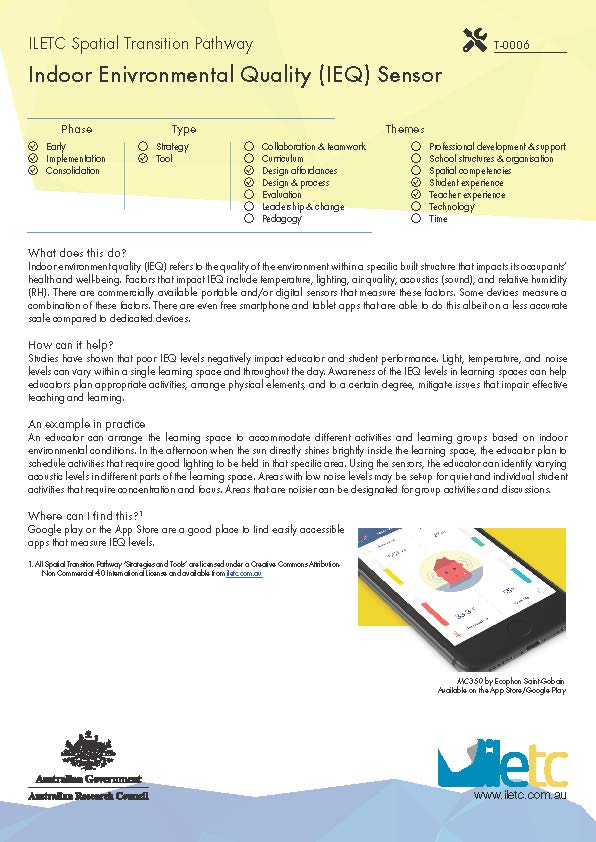| Introduction | Wayfinding activity | Spatial typologies | Spatial transition case studies | Spatial transition resources |
Spatial Transition Pathway
The Spatial Transition Pathway provides a framework for the strategies and tools which support teachers to make the journey of change into innovative learning environments. Strategy is defined as an explicit concept, theory or practice that enhances teachers’ use of innovative learning environments. A tool is an identifiable activity or protocol, that implements a strategy. You can use the database to search for strategies and tools by temporal phase or transition theme(s). If you would like to contribute a strategy or tool, please contact the ILETC team.
Indoor Enivronmental Quality (IEQ) Sensor
Indoor environment quality (IEQ) refers to the quality of the environment within a specific built structure that impacts its occupants’ health and well-being. Factors that impact IEQ include temperature, lighting, air quality, acoustics (sound), and relative humidity (RH). There are commercially available portable and/or digital sensors that measure these factors. Some devices measure a combination of these factors. There are even free smartphone and tablet apps that are able to do this albeit on a less accurate scale compared to dedicated devices.

